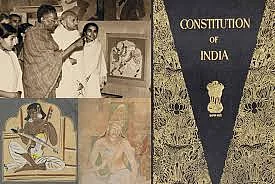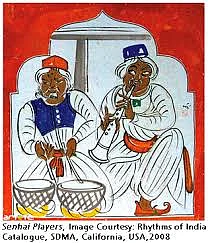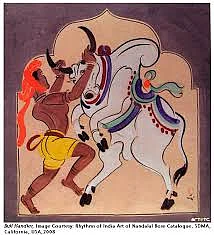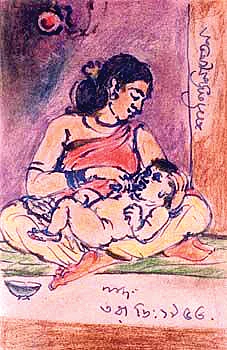Nandalal Bose’s Haripura Congress paintings to visit Venice Biennale
It was Mahatma Gandhi’s idea to borrow Nandalal Bose from Rabindranath Tagore’s Santiniketan and ask him to create what’ve gone down in history as Haripura paintings

A look at the Indian elections in 2019 and one is only dismayed to see how our modern politics is completely delinked from artistic creativity today. But there was a time, not long ago, when both politics and art went hand-in glove. Our master modernist Nandalal Bose is one such noted artist who voluntarily worked with none other than Mahatma Gandhi and Gurudev Rabindranath Tagore and contributed immensely towards the freedom movement with his artworks. India is showcasing Nandalal Bose’s Haripura paintings — the posters he created for the Haripura Congress held in February 1938 — at the Venice Biennale, one of the most prestigious art shows in the world, in May this year.
India has been making its entry to the 124-year-old global painting exhibition, which allows various countries to display their artworks since 2011. The Ministry of Culture selects the works for the global summit. Considered one of the pioneers of modern Indian art and a key figure of Contextual Modernism, Nandalal Bose (1882-1966) was a student of Abanindranath Tagore and later became the principal of Santiniketan’s Kala Bhavan, the art wing of Viswabharati University, established by Rabindranath Tagore. He was known for his indigenous style at a time when the norm was to follow the European masters. He was inspired by Ajanta paintings and he tried to bring back that style in murals, not to speak of the depiction of Indian rural life. All of his paintings are part of National Treasures and cannot be sold outside the country.

It was Mahatma Gandhi’s idea to borrow Nandalal Bose from Tagore’s Santiniketan and ask him to create what have gone down in history as Haripura paintings. He had painted around 400 posters, some of them alone and some with his students. The posters depict rural life and landscapes, painted on handmade paper with pigments made from earth and stones and mounted on straw boards. The posters were planned to awaken the spirit of swadeshi and political consciousness at large. Nandalal Bose was brought in because his works were symbolic of the nationalist spirit.
These paintings are a landmark in modern Indian history, given that they were executed in 1937, commissioned by Gandhi himself for the Indian National Congress party meeting at Haripura in 1938. Art historian and critic R Sivakumar said, “Nandalal Bose looked at cultural idioms and the fabric of the common man when he created images of musicians, blacksmiths, tailors, an esraj player, a veena player, or women doing their chores. One of the finest among them is the ‘Bull Fighter’. The vigour and tenacity of the man and the bull are shown through strong , gestural lines and swaths of bright, bold colours. It was prominently displayed on the Haripura conference ground.” He added, “Deceptively simple in appearance and invoking the flavour of folk painting, the Haripura posters are an amalgamation of decorative and the calligraphic art with a rare ingenuity and personal insignia.”



Nandalal Bose had a natural flair for designing architectural constructs, interiors and stage settings for performances and ceremonies on various occasions and rituals in the campus of Santiniketan. He fostered the idea of ‘art for the community’ and ‘collective art initiative’ by setting innumerable examples along with his associates and students throughout his life. It is true that his innovative philosophy concerning art and art education within the larger context of social concern was influenced to a large extent by the ideas of two of his eminent contemporaries, MK Gandhi and Rabindranath Tagore.
While Tagore’s focus was on the cultural regeneration of India, Gandhi’s primary concern was the political and economic independence of our country. Inspired by both these personas and convinced by his own exposure and extensive field studies, Nandalal’s spectrum of art practice continuously and emphatically embraced the entire breadth of Indian art heritage, both living and past, with a strong prominence of the rural craft traditions.
According to Binodebehari Mukhopadhyaya, “In these Haripura panels painted for the session, there is an ineluctable harmony of tradition and study based on observation. Each poster is different from the next in form as well as in colour and, yet, there runs all through a strong undercurrent of emotional unity, lending a familial stamp. The artist has not looked towards any ideals either traditional or modern, but keeping an eye on the contemporary situation, has worked out his own goal. The stream of form and colour which flows over the subject, subordinating it, brings these posters into kinship with mural art.”
Follow us on: Facebook, Twitter, Google News, Instagram
Join our official telegram channel (@nationalherald) and stay updated with the latest headlines
